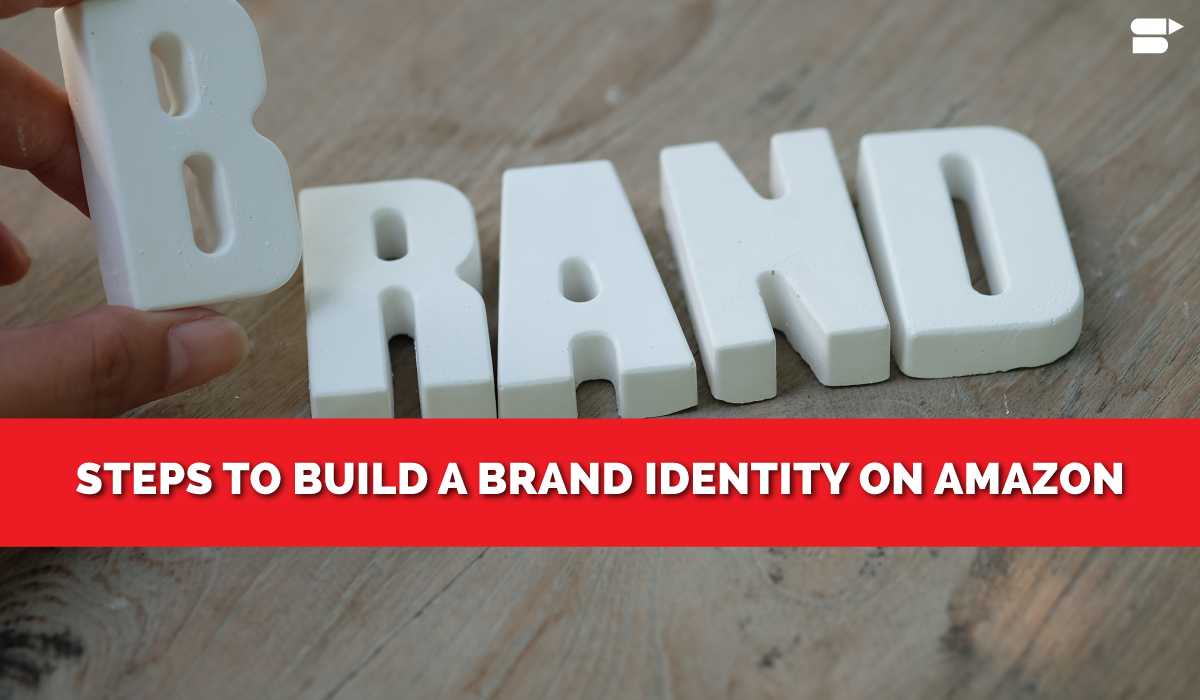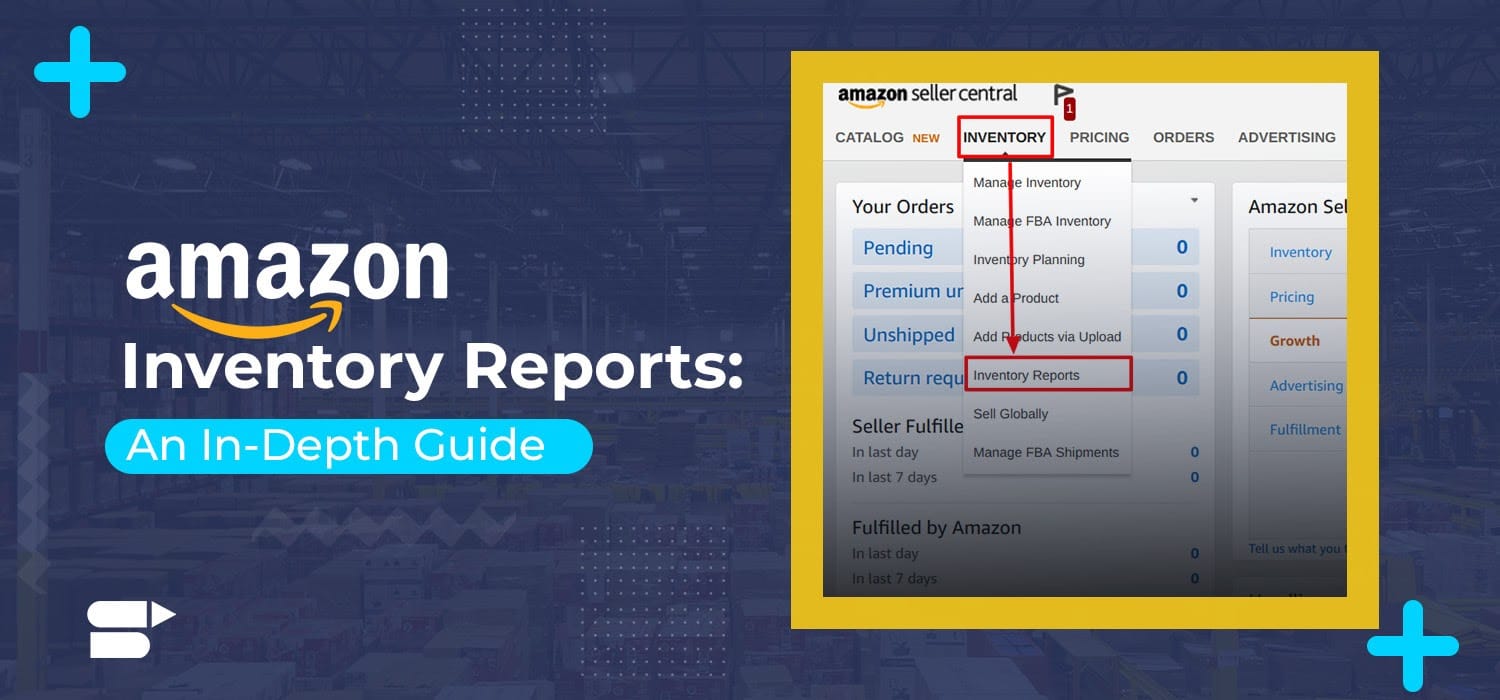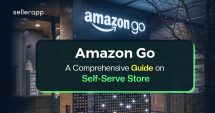Amazon Brand Identity Guide: How to Get Noticed Online

Over the years, major global brands have mastered the art of setting themselves apart through strategic marketing and distinctive branding.
A unique brand identity serves as a powerful vehicle, effectively sharing a brand’s narrative, messages, and values with its customers.
Picture stepping into an Apple Store, and you’ll immediately grasp the seamless harmony between the store’s design and Apple’s product aesthetics – a fusion of sleek minimalism that echoes the company’s core principles.
In the era of increasing online shopping, the Amazon Marketplace has evolved into a diverse landscape mirroring large brands and their unique identities.
Private label sellers and brand owners are now navigating the task of crafting a distinctive Amazon brand identity.
While replicating the personalized ambiance of a physical store may pose challenges, e-commerce sellers can employ various strategies to accentuate their Amazon brand personality.
Discover the guidelines and practices that can transform your brand into a standout presence on Amazon, even in the absence of a brick-and-mortar experience.
Quick Guide
- Amazon brand identity: Getting started in 2022
- Outline your Amazon brand identity
- Create Amazon brand assets
- Design packaging for your products
- Expand your product catalog
- Ensure customer satisfaction
- Create amazing A+ content
- Use social media
- Final thoughts
Amazon brand identity: Getting started in 2022
The bright yellow arching ‘M’ of McDonald’s and the bright red and white of Coca-Cola have left an indelible mark in every shopper’s imagination. This is the primary objective when companies attempt to create their Amazon brand image and persona. From brand logo, font, and colors to product packaging, every little detail about your brand needs to be planned and executed to perfection.
Here’s everything you need to do to create a lasting and meaningful impression with your customer.
Outline your Amazon brand identity
This is the planning phase. The first step is to identify your target customer demographic. Your Amazon brand identity needs to be designed with your product and customer in mind. Ask yourself this question – What is the unique selling proposition of my products? Who will buy my products, and why will they buy them?
Before moving further, take a look at the two Amazon listings below.
Both products have the same function. They are both backpacks. But, it is visible that the Minecraft backpack has been made for children, while the second backpack is for adults. The keywords used are different, and so is the selling point. It is highly unlikely that a working professional will buy the Minecraft backpack, but children will love it! Everyone has a different taste when it comes to design and aesthetics.
Start thinking from a similar perspective when creating an outline for your Amazon brand identity. If you’re selling products meant to be used by children, then bright colors are usually the way to go.
If your products are for professional use, stay away from bright colors, and keep the design minimalistic.
Create Amazon brand assets
Once you have your Amazon brand identity outline in place, you need to start creating your brand assets. It includes design assets like logos and a detailed brand story and mission. Visual elements can often connect with customers a lot better than just plain text. I recommend hiring experts when designing your company assets. It is a long-term investment that is worth the money if you can spare it.
These are a few things you should keep in mind when designing a logo and selecting brand colors:
- Do not blindly follow trends. A unique logo always makes a better impression.
- Identify two or three brand colors. You want your customers to immediately think about your brand and products when they come across these colors.
- Just like brand colors, have a strict font policy in place. Keep your customer in mind when picking the font as well. Comic sans is not going to boost sales when your ideal customer is a working professional.
- Keep your logo simple and minimalistic. This rule isn’t written in stone. However, the easier it is for customers to recollect your logo, the better.
- Do not use vector graphics, raster images, or stock art.
Along with these assets, write a simple and engaging brand story. Try to make an emotional impact by identifying with your target customer. People do not make purchasing decisions after crunching the numbers. Humans are driven by emotion and our shopping behavior is no different. An emotional connection can usually convince someone on the fence to buy your product.
Design packaging for your products
Product packaging is a pivotal part of the purchasing experience. Opening an Amazon package is like opening a present. There is a sense of excitement every time you unbox a product. Your brand’s packaging needs to fulfill this sense of excitement.
That’s not all! Product packaging is open real estate for all your branding needs. So, make sure you include your logo design and other brand elements in your product packaging. These elements are the key to establishing your Amazon brand identity.
Note: Ergonomic designs that make it easier for consumers to open and repackage the product can exponentially enhance the unwrapping experience.
The packaging also sets the tone for the product. A well-designed product packaging will increase your product’s perceived value in the eyes of the customer. Before you start designing your packages, there are a few Amazon branding and packaging guidelines you need to follow.
The packaging is a part of your brand’s assets. So, make sure you have your ideal target customer in mind when creating them.
Want to learn the latest branding strategies on Amazon? Check out this video where Amazon marketing expert Emma Schermer Tamir breaks down what big brands get right.
Expand your product catalog
A unique brand identity can lead to better customer retention. When customers are happy with a product and the service, they will likely buy from you again. However, this depends on whether you sell the item that they are looking for. This is why it’s a good idea to add similar and complementary products to your brand’s catalog.
For instance, if you sell an ‘Iron Man’ backpack, it may be a good idea to sell ‘Hulk’ lunchboxes. When parents shop online for school accessories, they may buy both your lunchbox and backpack. If you’re smart about your branding, they will begin to associate your brand with accessories for their children. Consistency in product purpose will ensure that you get repeat customers and greater brand recognition.
Of course, finding new products is far from easy. Trying to sell a product with high competition and low demand is a recipe for disaster. This is why it is important to make decisions based on actionable data. Use SellerApp’s product intelligence tools to find what’s in demand.
Ensure customer satisfaction
Suppose you’re out shopping, and you want to get some milk. There are two supermarkets nearby – A and B. Both stores have the same brand of milk that you want to buy. The only difference between the two supermarkets is the staff. In supermarket A, people are polite, professional, and helpful. In supermarket B, they are aloof. Which supermarket are you going to buy milk from? Chances are that it is supermarket A.
Note: Be consistent with product price and quality. These two crucial elements play a massive role in how customers perceive your brand.
The same principle applies to e-commerce. The relationship that you build with your customers is a part of your Amazon brand identity. If you strive for and ensure customer satisfaction, customers will always come back and shop for your brand. Being competitive with your prices is also a great way to ensure customer satisfaction. If you have a kickass product that is priced competitively, you’re well on the way to creating a well-known brand identity on Amazon.
Create amazing A+ content
Amazon understands that brand identity drives sales. That is precisely why the retail giant gives brands the means to spice up their product pages. Amazon A+ is a feature that allows brand owners (sellers and vendors) to enhance their product descriptions with rich media content. If you have a brand registered with the Amazon brand registry, you should create A+ content for your branded products.
Basic Amazon A+ content is free at the moment, but I recommend hiring experts to design rich media content. When done right, Amazon A+ content will improve conversions and help build a lasting brand image on Amazon.
Need help creating engaging product pages that guarantee conversions? Get professionally crafted product listings and sales copies with SellerApp.
Use social media
Around 54% of social media users utilize these platforms to search for products. That’s not all. Around 50% of the global population uses social media. That’s more than 3 billion social media users, out of which around 1.5 billion use social media to look for products. That is a massive number of potential customers.
This is why social media is one of the best spaces to create your brand identity and raise brand awareness. Create social media accounts for your brand and start talking about your products, and services. Engaging directly with your consumers is also a great way to generate social proof – arguably the best marketing tool in any corporation’s arsenal.
(An Instagram post by the beauty and wellness brand Oriflame highlighting their products)
Don’t forget, your brand needs to stand out – this is true for social media and Amazon. If your brand or products have a unique selling point, make sure you highlight it. Your social media handles should post content that is in line with your Amazon brand identity, and you should use brand assets like logos whenever possible. This improves brand awareness and engagement outside social media platforms as well.
You can also use social media to update customers about upcoming promotions and sales. People love to share information through social media, so this is also a great way to generate some buzz around upcoming events. It’s also a great way to get some new followers who could go on to become new customers.
Running multiple social media handles and updating them regularly is not easy to do. However, if you manage to accumulate a reasonable number of organic followers, it can go a long way in building your brand identity on Amazon.
Final thoughts
Success in retail is dependent on your ability to stand out. This is true for both online and offline retail. However, with competition heating up, your Amazon brand identity has never been this important. Despite the competition, there is always room to carve out your niche and appeal to your target audience. Focus on your brand’s story and your product’s selling points, and you’re well on your way to creating an engaging brand image on Amazon.
Have any more questions on how to create an engaging Amazon brand identity? Let us know in the comments section below.
Related Content:
How to Manage the Supply Chain of Your Private Brand on Amazon
How to Get Approval to Sell Restricted Categories On Amazon
Best Private Label Products to Sell on Amazon To Make Money
What’s The Amazon Sales Strategy For Brand Owners?




![The Ultimate Amazon Halloween 2025 Guide [Crush your Q4 Goals!] 7 amazon halloween](https://www.sellerapp.com/blog/wp-content/uploads/2025/10/amazon-halloween-215x113.jpg)







Nicolas Mammoccio
May 13, 2021What could be considered as the most important factors when it comes to customer satisfaction?
Arishekar N
August 12, 2021Product price and quality are the two most important factors when it comes to how customers perceive your brand! Like they say, customer is king and they should be treated that way because their satisfaction is our ultimate goal.
Sammie
January 3, 2022Excellent post, very informative.
Arishekar N
June 8, 2022Glad you liked it.